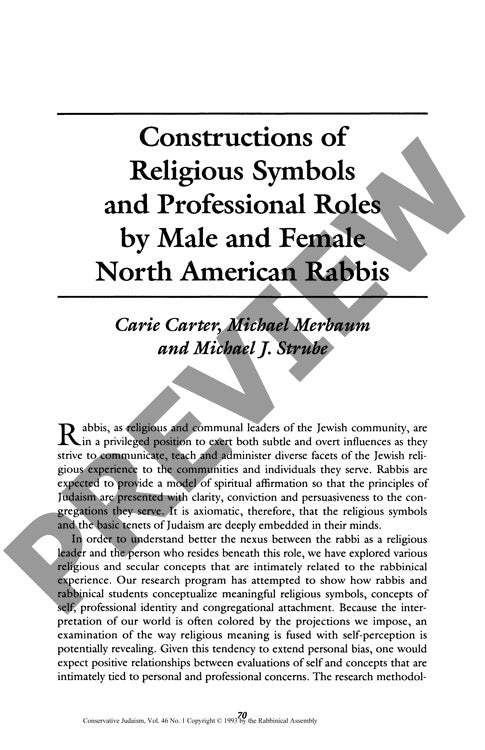Constructions of Religious Symbols and P
Couldn't load pickup availability
Religious symbols serve as powerful sources of professional identity and personal strength for contemporary North American rabbis, yet gender significantly shapes how these leaders conceptualize their roles. Through surveys of 109 rabbis and 33 rabbinical students from Reform, Reconstructionist, and Conservative movements ordained since 1972, the Semantic Differential Technique revealed complex relationships between religious symbols and professional self-perception. Participants rated concepts including Judaism, Torah, Male Rabbi, Female Rabbi, Congregation, and Self across evaluative, potency, and activity dimensions. Strong correlations emerged between Self, Judaism, and Torah on evaluative scales, suggesting rabbis view Judaism as an extension of their identity. While rabbis rated Judaism and Torah as significantly more powerful than themselves on potency scales, they perceived congregations as less competent - a hierarchical dynamic potentially contributing to professional stress. Gender differences manifested clearly in role conceptualization, with women viewing male rabbis less favorably and perceiving themselves as more active than their male counterparts. These findings illuminate how religious symbols provide vigor and potency that fuel professional commitment, while highlighting the ongoing influence of gender in shaping rabbinical identity and practice in contemporary Judaism.

More Information
-
Physical Description
-
Publication Information
Published 1993
ISBN
-
Publication Credits
Carie Carter

